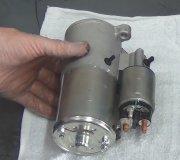You really need to give me some details or information to work with so I don't have to make guesses or ask you to do stuff you've already done. What were the results of those voltage measurements? What is the battery voltage?
Turn on the head lights, then see what happens to their brightness when you turn on the heater fan. If the head lights dim when the fan is turned on, that is proof there's a bad connection somewhere and it may be possible to find it with voltage readings. Leave those things turned on, then start right on the battery's posts, (not the cable clamps attached to them). You should have 12.6 volts or real close to it. If you do, move the meter probes to those cable clamps. The voltage must be exactly the same. If it's lower, one of those connections is loose or dirty.
Move the meter probes down the line that way. The goal is to find the next mechanical connection to take a reading. For the negative side that will be the engine block. Put the meter probe on a paint and rust-free surface on it. For the positive side that typically goes to the starter relay on the inner fender near the battery. On that one you want to put the meter probe on the copper stud, not the cable terminal bolted to it.
Most of the time you'll find the bad connection by this time or you'll find low battery voltage due to a bad battery.
Thursday, June 12th, 2014 AT 9:03 PM



